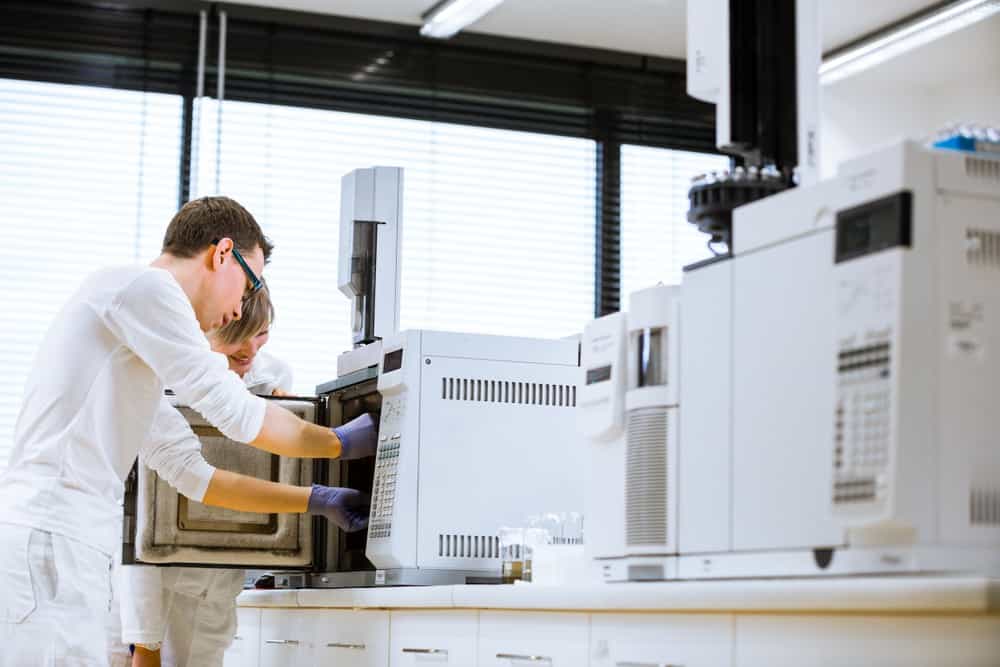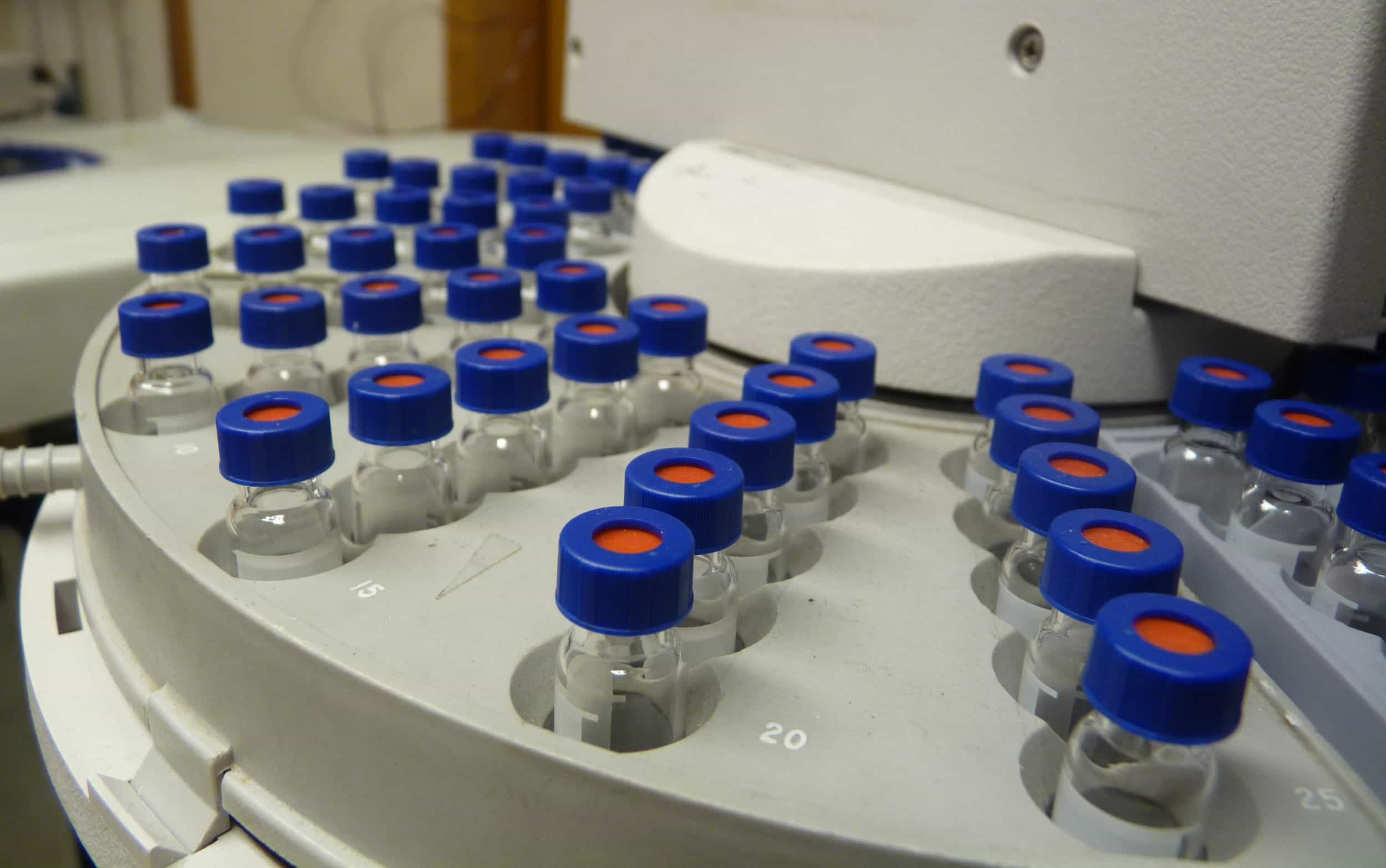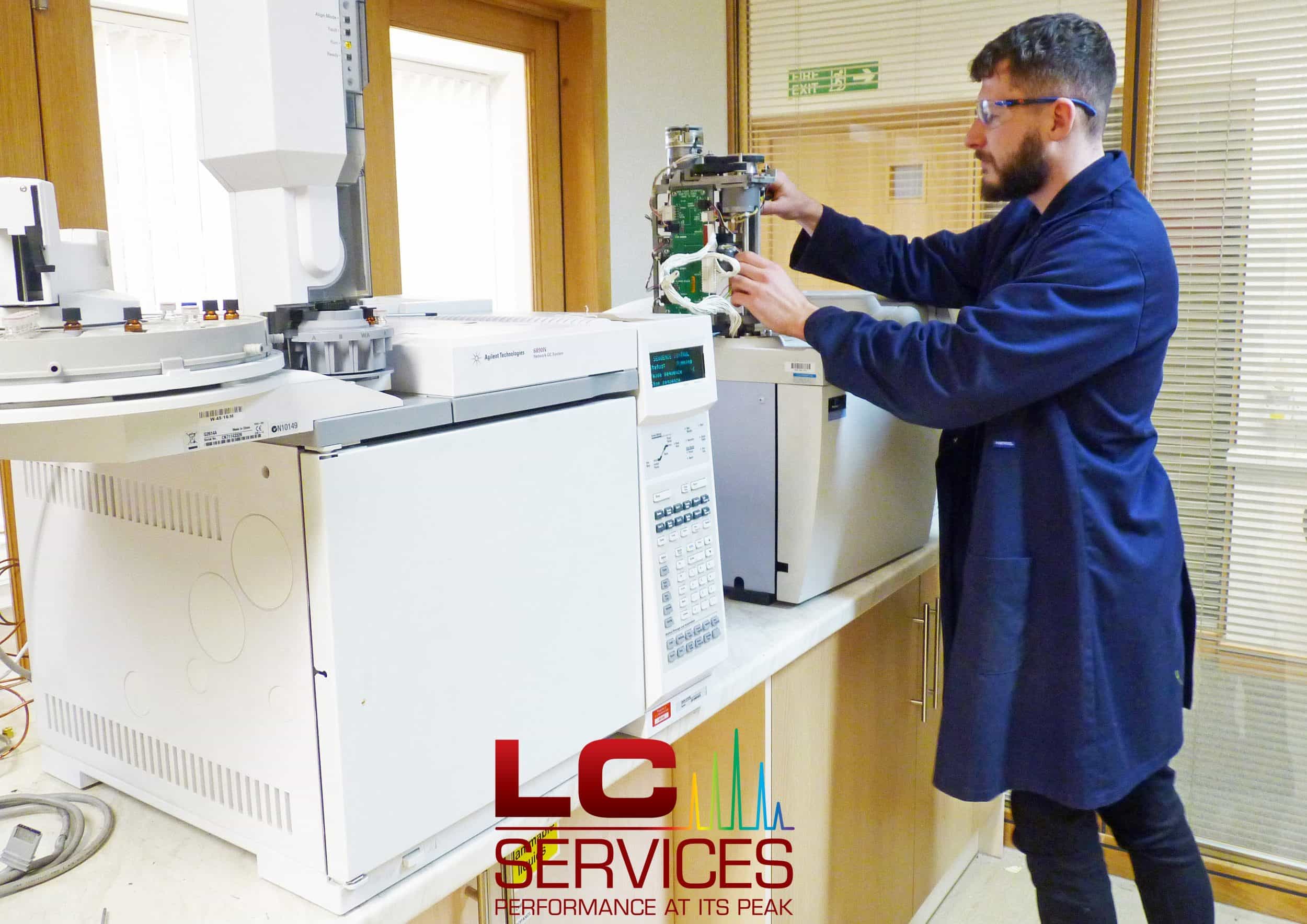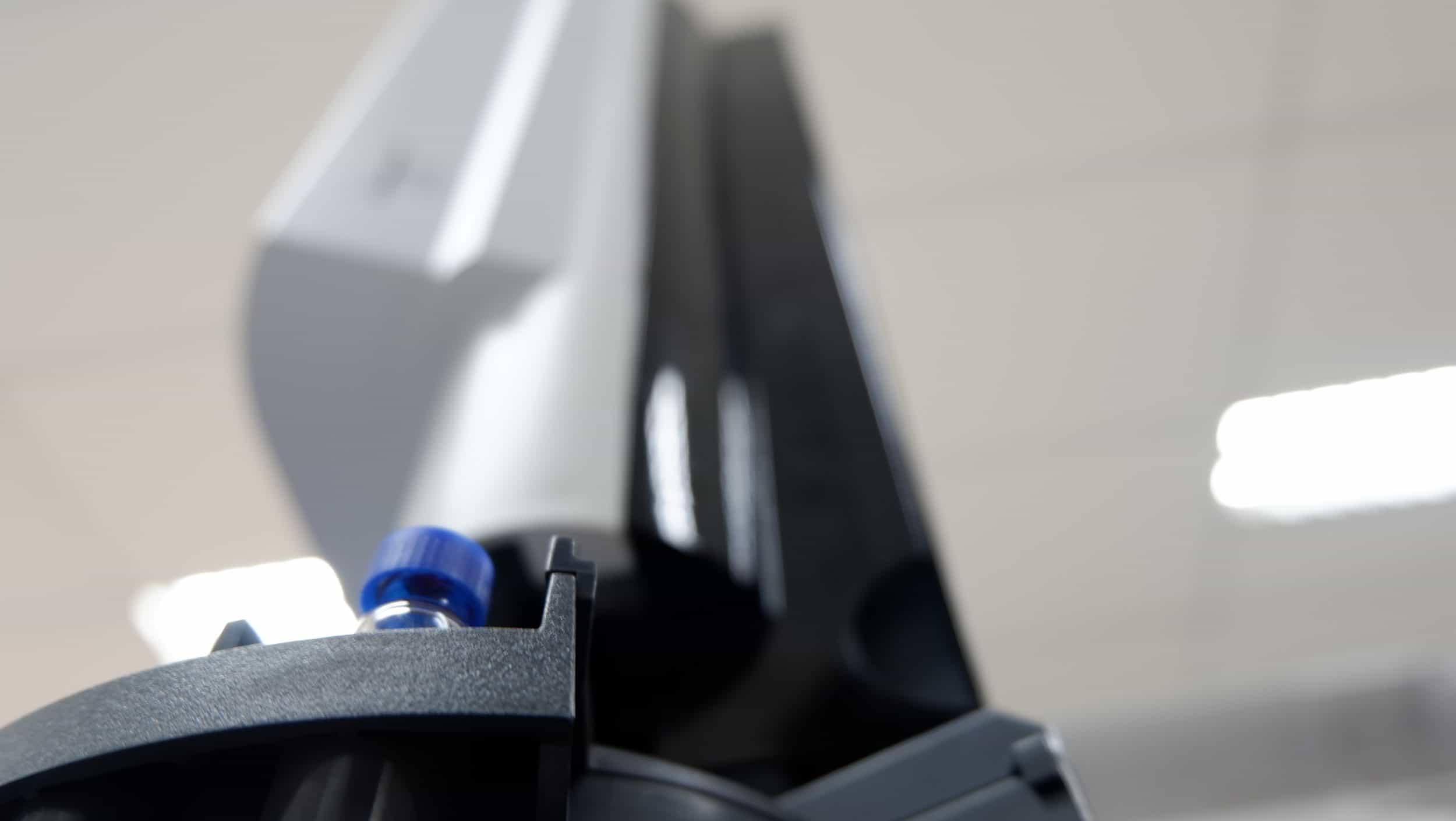
Gas chromatography (GC) is an analytical technique used to separate and identify components in a volatile sample to determine their presence or absence. It is most commonly used on compounds that are past boiling point at room temperature (i.e. they are a gas), or have a molecular weight of less than 1250 Da.
There are two main types of gas chromatography: Gas-Liquid Chromatography (GLC) and Gas-Solid Chromatography (GSC).
Gas-Liquid Chromatography involves mixing a small sample size of a volatile compound with a gaseous mobile phase to be passed through a non-volatile liquid stationary phase.
Gas-Solid Chromatography is when the stationary phase is solid. This method separates the compound using adsorption so has a much longer retention time than GLC.

Gas chromatography (GC) uses an inert or unreactive carrier gas as the mobile phase, typically helium or nitrogen. This gas transports a volatile sample through a long, narrow column. Inside this column, a stationary phase, usually a thin layer of liquid or polymer, facilitates the separation of the sample’s components.
As the mobile phase moves, it separates the mixture into its individual components, allowing for their identification one by one. Less volatile molecules move slower through the stationary phase, while more volatile molecules travel faster.
Helium has been the preferred gas for many years, but due to rising costs, laboratories are exploring alternatives like nitrogen, which is less expensive but results in slower chromatography.
Hydrogen is increasingly being used as a mobile phase due to its low cost and effective chromatographic properties, making it a viable alternative to helium. Laboratory hydrogen generators produce it on demand and it can be safely located in laboratory environments, eliminating the need for pressurised storage.
The stationary phase is usually made of silicone or other chemicals that selectively attract specific molecules, depending on the compounds suspected in the sample.

To begin with, the gaseous mobile phase is passed through a molecular sieve to remove any contaminants like hydrocarbons, water vapor or oxygen. If these are present, it can skew the data and give an inaccurate analysis of the compound in question.
Next, the compound sample is mixed with a volatile solvent like heptane, acetone or methanol and is injected into the column. At this stage, the sample is kept 20°C – 50°C hotter than the column to increase volatility before it passes through.
The sample is then passed through the column by the gas stream and separation will occur. This is also known as the components eluting.
The column temperature in gas chromatography is very high, at 150°C – 300°C, to encourage volatility and are relatively long compared to other types of chromatography, such as liquid chromatography.
There are two key types of columns:
Next, the sample will exit the column and reach the detector. This is where the components of the sample are identified based on how long it took for each component to pass through.
One of the most common types of detector is a Flame Ionisation Detector (FID). This uses a flame to ionise the sample as it elutes, which then releases electrodes that cause an electric current. The detector then measures the current to identify the molecules present.
In this type of detection, the chromatograph will show peaks where current increases, with the area underneath the peak indicating the concentration of the molecules present.
Another commonly used detector is a Thermal Conductivity Detector (TCD). This responds to changes in thermal conductivity and specific heat. When a molecule passes through the detector with the carrier gas, there is a change in thermal conductivity, which causes a peak in the gas chromatographs.

Gas chromatography is important as it is key for analysing volatile compounds to find out what they’re made of. Special conditions are required to measure gases, so it’s imperative a different method is used.
GC is typically used to identify unknown organic compounds and for quality control in a wide range of industries.
Here are just some of the ways gas chromatography can be used:
Gas chromatography offers significant advantages, particularly in its ability to identify unknown substances in volatile compounds. However, its reliance on volatility also presents disadvantages, as it is not effective for analysing non-volatile substances.
We explore the pros and cons of GC further below.
Improved insight into compound properties
One of the primary benefits of gas chromatography is its capacity to enhance our understanding of various compounds, including their chemical structures, concentrations, and behaviours under different environmental conditions.
Broad applicability
With a diverse range of available detectors, gas chromatography proves to be incredibly versatile. This adaptability allows it to be utilised in numerous applications, as mentioned above.
Exceptional efficiency and quick results
Gas chromatography’s efficiency in separating complex mixtures enables the detection of even trace amounts of substances, making it especially valuable in environments that require high throughput.
Dependability
Once properly calibrated, gas chromatography systems can operate continuously for extended periods, ensuring consistent performance and minimal downtime. It is also a very robust technique that can be used alongside other techniques, like mass spectrometry.
Accurate measurements
Finally, gas chromatography is a very reliable method of identifying substances. As it is based on the fundamental properties of the substances in question, the results can be easily replicated.

Requirement for volatile samples
A significant drawback of gas chromatography is its requirement for samples to be volatile and thermally stable. It is not a reliable method for non-volatile substances.
Inability to analyse large molecules
Gas chromatography primarily focuses on small molecules, making it unsuitable for larger biomolecules and macromolecules.
Maintenance needs
If the equipment is not maintained properly, it can lead to analytes getting stuck in the column or gas leaks that affect the carrier gases. Both of these issues will skew the results and not give an accurate analysis. However, these issues can be rectified with regular servicing.
Temperature limitations
Since gas chromatography relies on the volatility of compounds, it must operate at high temperatures. As a result, this method cannot be used to analyse compounds that break down or degrade with heat.
If your gas chromatography analyses are inaccurate, or you think there is an issue with your equipment, LC Services can help.
We supply high-quality gas chromatography parts to get your equipment back up and running, including reconditioned parts which offer a cost-effective solution.
Browse our services and get in touch with our team to find out more.
